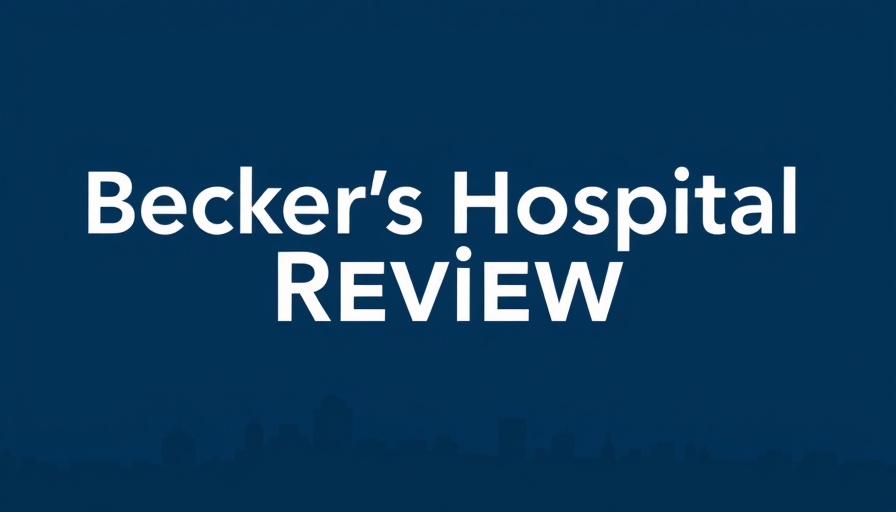
Understanding the Systemwide Outage at Covenant Health
In an unsettling turn of events, Covenant Health, based in Knoxville, Tennessee, has been grappling with a wide-scale system outage that disrupted critical communications and data systems across several of its facilities. This incident affects not only hospitals in Maine but extends to at least one facility in New Hampshire, most notably St. Joseph Hospital in Nashua. On May 26, the health organization identified 'irregularities impacting connectivity,' prompting immediate action to safeguard patient data and operational continuity.
The Impacts of Connectivity Disruptions
The impact of this outage has been immediate and considerable. Covenant Health acted quickly by shutting down all data systems across its hospitals and clinics to mitigate potential breaches, demonstrating a proactive approach in patient safety and compliance. St. Joseph Hospital has reported intermittent service outages, particularly affecting phone and internet access. Furthermore, outpatient lab services have seen significant limitations, available only at the main hospital campus and strictly with a physical order in hand. This proactive response underscores the importance of emergency preparedness in healthcare settings.
The Bigger Picture: Cybersecurity Challenges in Healthcare
This incident shines a light on the escalating vulnerability of healthcare systems to cyber threats and operational failures. As technology becomes more integrated into healthcare delivery, these systems are not only critical for efficient operations but pose risks if not managed properly. The growing reliance on electronic records and databases necessitates strong cybersecurity measures, not only to prevent breaches but also to ensure swift recovery from potential outages. Protecting healthcare data goes hand-in-hand with the effectiveness of patient care, highlighting the need for robust systems in place to protect both.
Future Predictions: The Growing Role of Healthcare Automation
As this situation unfolds, it bears noting that healthcare automation tools, such as voice AI agents and patient engagement tools, play a vital role in maintaining patient care continuity during such outages. With many practices exploring automation for efficiency and cost savings, advancements can help mitigate the operational impact of similar scenarios in the future. Implementing HIPAA-compliant automation and medical office workflow solutions can not only enhance practice efficiency but streamline issues like patient onboarding, appointment scheduling, and billing recovery, thereby safeguarding continuity in patient care.
What This Means for Independent Practitioners
Independent physicians and small practice owners should take away vital lessons from Covenant Health's experience. Ensuring system resilience by investing in robust healthcare IT infrastructure and exploring alternative revenue optimization models can be imperative in sidestepping similar pitfalls. Furthermore, practices should ensure participation in Medicare-backed services and examine how remote therapeutic monitoring (RTM) can be integrated into practice services, enhancing patient compliance and treatment adherence.
Actionable Insights: Building Resilience Against System Failures
Healthcare providers need to take a proactive stance toward digital health solutions by adopting automated billing systems and adopting FICA tax savings programs. Given the potential for disruptive events, the integration of telehealth revenue strategies is an essential consideration for sustaining practice viability and patient engagement. By embracing these technologies, independent practices can bolster their resilience against future data or system failures.
Final Thoughts on Healthcare Cybersecurity
The incident at Covenant Health serves as a sobering reminder of the potential threats facing healthcare systems today. As the healthcare landscape evolves, prioritizing robust emergency and cybersecurity measures will be essential in safeguarding service continuity and protecting patient data. Engaging with HR strategies and understanding employee health benefits will ensure a holistic approach as practices adapt to these new challenges.
Covenant Health is currently working diligently to restore full service capabilities. As we monitor their progress, let us advocate for enhanced healthcare systems and engage in conversations to build a more secure future in healthcare.
 Add Row
Add Row  Add
Add 




Write A Comment